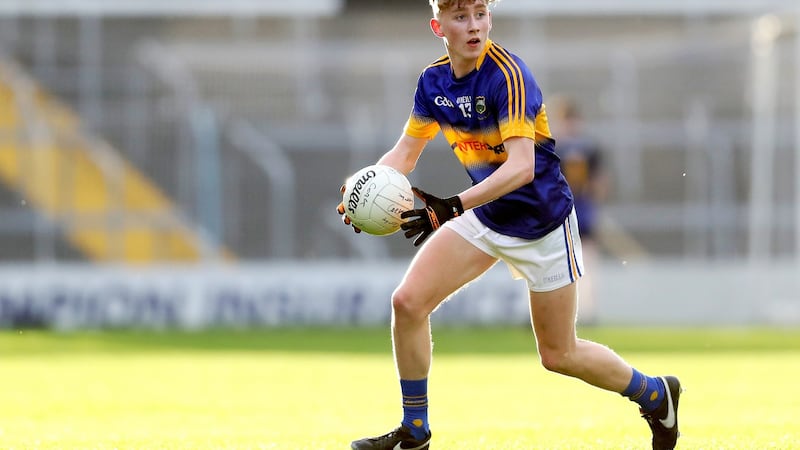"I have a kind of post-traumatic stress even just watching football on TV now. I get nervous watching the tackling even." So says Shona Barrett, one of the cruciate-stricken subjects of tonight's TG4 documentary on the effects of GAA injuries. Made by Midas Productions, An Taobhlíne tracks four footballers and hurlers as they recover from the type of long-term injuries that have become so common in the game nowadays.
By rotten coincidence, Barrett and her sister Coleen are both recovering from cruciate injuries at the same time in the film. While Shona’s is the more serious of the two – she ruptured both knee ligaments and tore her hamstring off the bone – former Dublin All-Ireland winner Coleen has fallen victim too. Both sisters missed out on St Brigid’s county final defeat to Foxrock-Cabinteely this year as a result.
"Unfortunately, sport comes at a certain price," says Patrick Carton of the UPMC Whitfield in Waterford. "There will always be a need to look out for certain problems and the way we're training and the pressure put on some of these young athletes. They can lead to further problems.
“We do need to think about the amount of times these players are training, especially if they’re playing football and hurling. They’re training four or five days a week and adding gym work in on top of that, all of it puts enormous strain on a hip that’s growing.”
Uncomfortable
Carton was treating Evan Drohan, a 17-year-old hurler from Waterford who was in the clinic for his second hip operation inside a year. Drohan hurls for the De La Salle club in Waterford city and throughout the film, he is visibly uncomfortable with what sort of future he can expect if he keeps playing the game he loves. His sister Caoimhe is a camogie player who had two cruciate injuries in her teens so he's keenly aware of the dangers of going back to it once his rehab is done.

“I’m only 17,” he says at one point. “I have to call the shots myself. If I do go back playing, the chances are 80 per cent that I will need surgery again at some point. If I don’t go back playing, I might never need surgery again. That’s the key thing Dad was saying to me, ‘You have to think of your future. Is it worth the pain?’ I could end up with arthritis, like.
“I’m talking to a few physios at the moment and I told them that my other hip had been bad as well. And they’re kind of telling me in a roundabout way not to go back. Hopefully I will be back. I’d love to play hurling again. Without hurling, it’s tough going. But I’ll have to find something to do if I do end up stopping playing.”
Overuse
Also in the film is Mark Stokes, a Tipperary young dual player whose hips are similarly worn down through sheer overuse. Playing football and hurling to a decent level comes with its own pressures, never more so than when you die all the small deaths that something like a wear-and-tear hip injury can bring.
“It wasn’t anything sudden,” he says. “It went gradually. You’d be struggling to get up the stairs with the pain. In a small village when there aren’t many players and they’re stuck for numbers and they see you sitting on the sideline, they’d be looking over at you saying there was nothing wrong, that he’s just taking time out to study for his Leaving Cert.”
The film makes it clear that injuries are inevitable – but also that everyone can do more to take care of themselves and especially the young players in their care.
“I think we need to be more focused on players’ welfare,” says Gearoid Devitt, the GAA’s player welfare administrator. “Sometimes in the GAA, we concentrate too much on winning and competitiveness. We have to think more about the long-term welfare of our players and ensure that we’re not leaving players at the end of their careers resenting their involvement in the GAA.
“In the GAA, the most important match is the next one. Players have to think about their long-term involvement in the game. Messages like that do take time and they may take a culture change and even it might take a couple of generations to go through.”
An Taobhlíne, TG4, Wednesday, 9.30pm









